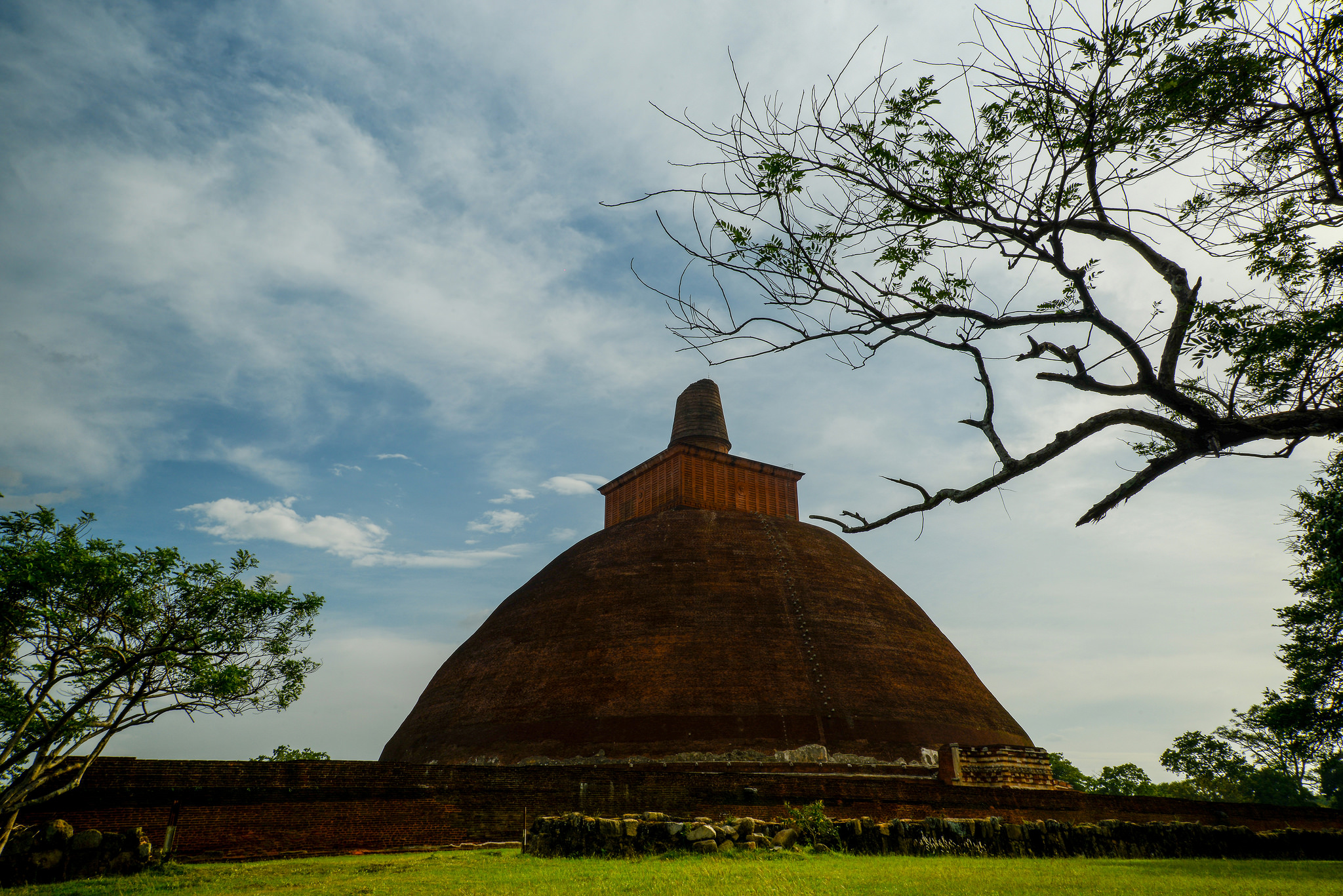In a Gist: Weathered ruins and tall dagobas are what make up Anuradhapura, a historical city that was the capital of the country for a long time.
Cycling is the best way to explore the ancient city of Anuradhapura. By wandering around on a cycle, you will get an idea of what the city that ruled Sri Lanka for over a thousand years looked like before its downfall in 993 AD.
History: Minister Anuradha and Prince Vijaya from India came to Anuradhapura and began a settlement in the 6th century BC. In 380 BC, the city first became a capital under Pandukabhaya, during the reign of King Devanampiyatissa. For over a 1000 years, the city remained the capital and saw several kingdoms ruling it.
Geography: The sprawling cityscape covers more than 16 square miles and includes massive dagobas, old trees, reservoirs, and crumbled foundations. Anuradhapura is a huge city but just one day is sufficient to explore what there is to see. If you are a history lover, 2-3 days would be needed to examine the significance of each landmark.
What to see in Anuradhapura:
Many locals still reside in Anuradhapura, giving the city a vibrant feel. Cars drive past the roads through which the dagobas are within eyesight distance while shops and houses are scattered on either side of these roads. The mix of modern and ancient Sri Lanka existing side by side gives the perception of a very peaceful atmosphere in the city. Blue Lanka Tours offers detailed cultural itineraries that cover the city of Anuradhapura along with other cultural cities such as Sigiriya, Dambulla and Kandy where you can learn more about the history and culture of Sri Lanka. Here’s a gist of what you should see in Anuradhapura:
- Begin with the Abhayagiri Museum for an insight of the lives of ancient civilization, as well as a detailed understanding of the history of Anuradhapura.
- There is also the Anuradhapura Archaelogical museum where several artifacts are preserved. These include carvings, artworks and daily essentials of ancient Sri Lanka.
- The Abhayagiti Dagoba, over 100 meters high, was one of the most splendid structures of the ancient world. Its height made it just a little smaller than the pyramids of Giza. Today, the structure has severely shrunk but is still as high as 75 meters.
- Ratna Prasada, also known as the Gem Palace, was a five story building built in the 8th This was the main house of Abhayagiri monastery. The structure is very much ruined today and what remains is only an impressively carved guardstone.
- An amazing white structure referred to as the Ruvanvelisaya Dagoba was protected during those times by a wall of elephants standing shoulder to shoulder. Today, just a few of the original carvings of 140BC remain.
- Jetavanaramaya Dagoba was originally believed to be over 120 meters tall, and the tallest structure in Sri Lanka. What you will see of this Dagoba today is just a height of 70 meters.
- Successful irrigation systems were critical in Anuradhapura due to hot and arid weather conditions. Three ancient tanks were used as reservoirs to protect agriculture when the rains failed. Stroll along the banks of these tanks and you will have a wonderful view of the aforementioned dagobas.
- Sri Maha Bodhi is an interesting place of worship which is surrounded by Bo Trees and ancient stone walls. The sun beats down through the trees and walls and the heat reaches your feet as you are not allowed to wear shoes here. The Sri Maha Bodhi (main Bo tree) is supposed to be the most ancient tree in the world that has remained uninterrupted over the years (approximately 2000 years old).
- A temple known as Isurumuniya Vihara, was in use from 247-207 BC. There are many beautiful carvings here, along with a museum that has several ancient artworks. Upon climbing the carved steps of the rock temple, you have an elevated view of the Anuradhapura city.

